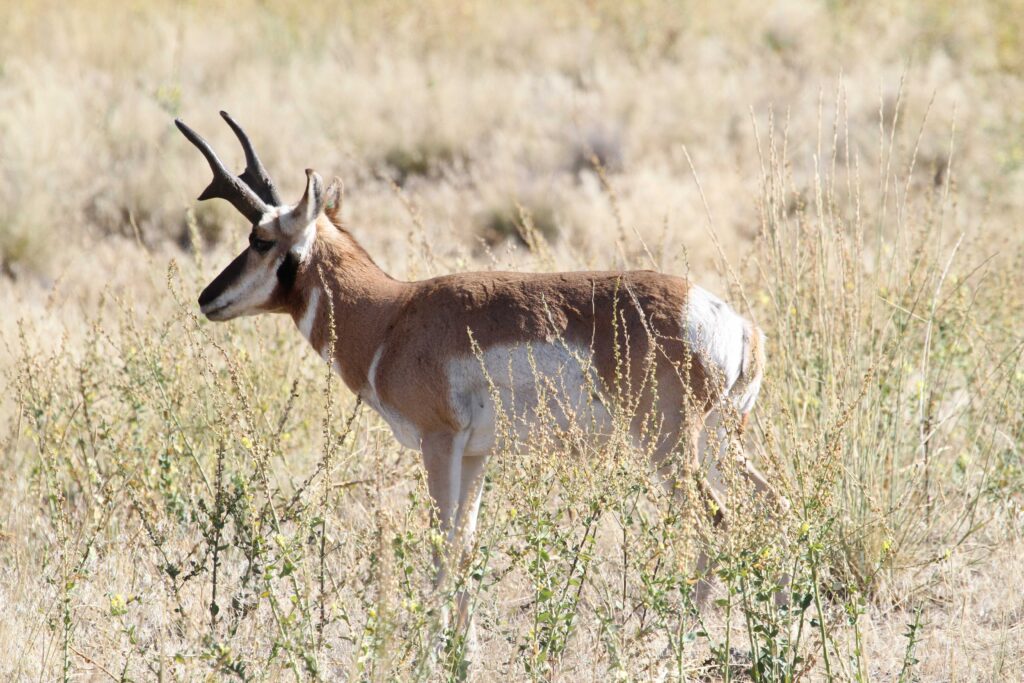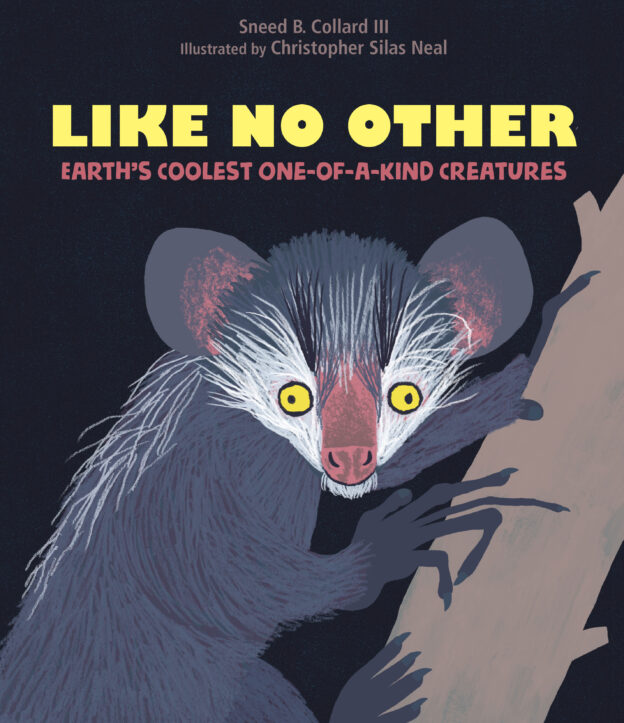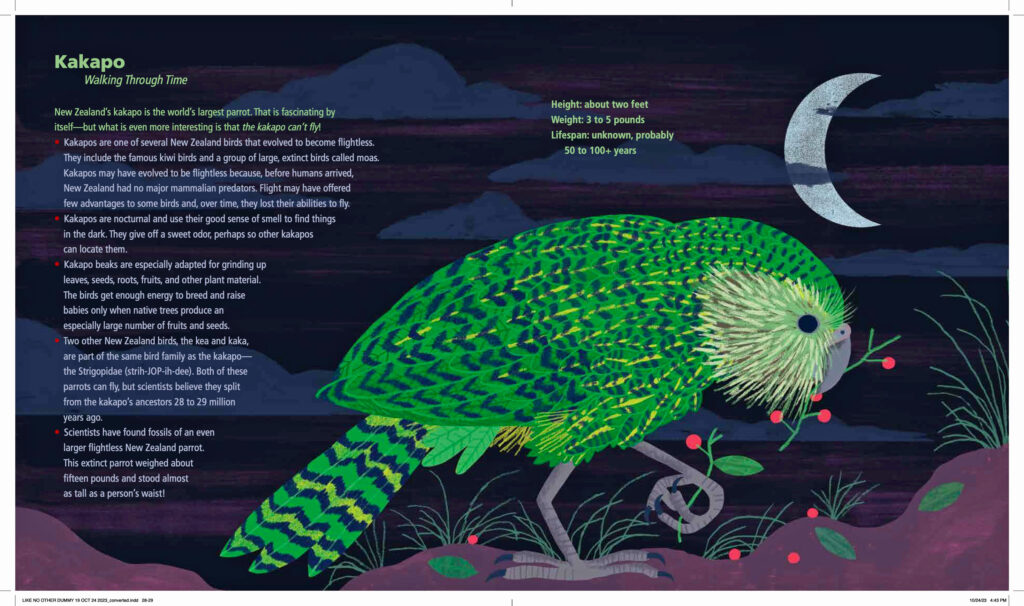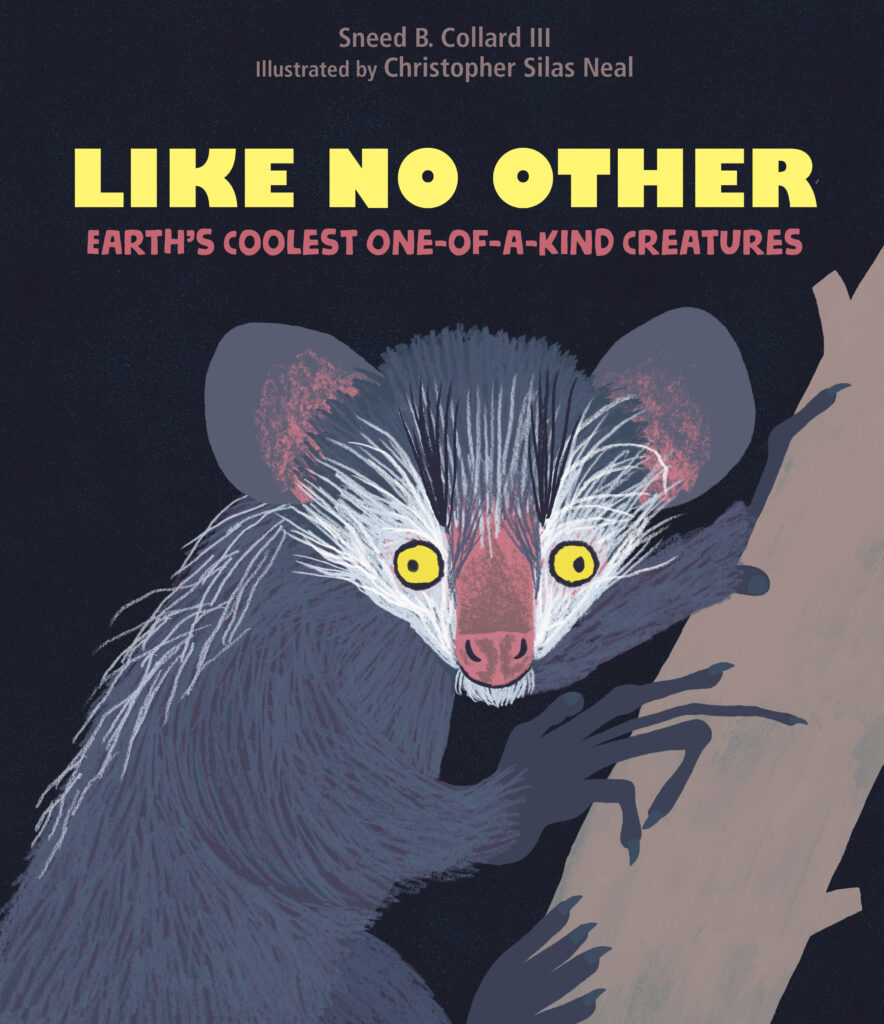Thank you for sharing this post :)!
This week’s blog focuses on one-of-a-kind birds—and a book to go along with them. For those of you who have been following FatherSonBirding for the past couple of years, you may remember a February, 2022 post about monotypic animals. These are animals that have no other species in the scientific genus to which they belong. At the time of the post, I had begun researching a new children’s picture book about animals that were not only monotypical to genus, but to the family or order taxonomic level. In other words, these animals are really alone in their taxonomic world. What’s more, they often possess wonderful adaptations and behaviors found nowhere else in the animal kingdom. They include both animals you are undoubtedly familiar with such as the platypus, leatherback sea turtle, whale shark, and pronghorn. They also include lesser-known critters such as India’s purple frog and the South American monito del monte.

The good news is that Like No Other: Earth’s Coolest One-of-a-Kind Creatures is now a reality, exploring 13 of earth’s most remarkable creatures! But since this is (mostly) a birding blogsite, let me focus on the one-of-a-kind birds in the book.
Like No Other’s very first animal is Africa’s Secretarybird. I first learned about this bird 25 years ago when I was researching a book called Birds of Prey: A Look at Daytime Raptors. That book is now out of print, but while researching it, I came upon this bizarre-looking, long-legged raptor that often kicks and stomps its prey to death—when it’s not carrying them up into the air and dropping them from great heights. This grassland- and savanna-dwelling bird originally lived throughout much of Africa, but has declined sharply in much of its range. Culprits include habitat loss and degradation, collisions with fences and powerlines, and poisoning from pesticides. It is a dream of mine to see these birds in the wild before I croak (or hit a powerline myself).

The second bird in Like No Other is a bird I’m not sure I’d even heard of before writing the book: South America’s Oilbird. These squat, kind of chubby-looking birds are reminiscent of nightjars such as the Common Nighthawk or Common Pauraque, but similarities stop there. Oilbirds roost in colonies of up to 10,000 birds in caves of forested areas of northern South America and along the spine of the Andes. Like bats, they use echolocation and an excellent sense of smell to locate fruits of forest trees. Birds of the World lists them as of “Least Concern,” but they contain so much fat that in the past they have been boiled down for oil lamp fuel. No one has any idea how long they live.

You know me. I would have packed a lot more birds into Like No Other but felt obligated to include a fair number of other vertebrate groups (those darned vertebrates!). I did manage to wedge one more monotypic bird into the pages, however—New Zealand’s enigmatic Kakapo. For those of you who haven’t heard of it, the Kakapo is the world’s heaviest parrot. Even more amazing, it doesn’t fly! I first learned about the birds 35 years ago when I was on a four-month bicycle trip through New Zealand. At the time, fewer than 50 Kakapo were thought to exist, and as is so often the case on Pacific islands, invasive mammalian predators were largely to blame. Thanks to an intensive conservation program that included captive breeding and eradication of introduced species from offshore islands, however, the Kakapo’s future now looks much rosier. Kakapo are by no means out of the woods, but their population is up to about 250 birds, and they are being closely monitored. It’s another wonderful example of what humans can accomplish when we put our minds to it.
Humans are the very last one-of-a-kind creatures in Like No Other. Nothing like us has ever existed on the planet before, and the jury’s still out whether we can figure out what to do with our big brains and ambitions without destroying ourselves. Stories of protecting the Kakapo and other species in Like No Other, though, give me hope we’ll come up with solutions.
Like No Other is available now from your local independent bookstore, online stores, and other outlets.




Congrats on the book, Sneed. What a great topic.
Hey, thank you Roger! It’s very rewarding to see years of thought about this come to fruition!
Congratulations on your book debut! It sounds wonderful and I love the illustrations:) Good luck with its success.
That’s so kind of you, Marie! Thank you. I also love the illustrations. It’s great to have an editor with a vision that you might never have imagined!